Are you a Quiet Speculation member?
If not, now is a perfect time to join up! Our powerful tools, breaking-news analysis, and exclusive Discord channel will make sure you stay up to date and ahead of the curve.
Alright, no more delays. All the data is finally in, and so it's time to do November's Metagame Update. So far, the metagame has generally been dynamic. The top deck hasn't been consistent between months, though Rakdos Prowess and its descendant Scourge Shadow have been consistently Tier 1 since I started doing these again. Will it continue? Only one way to find out.
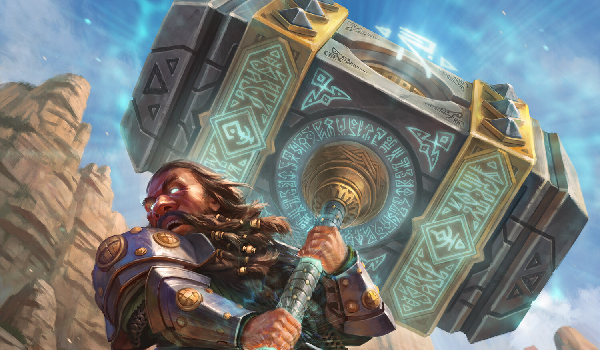
November was the largest data set so far, and by quite a large margin. September held the previous record with 611 decks, and November blew that away with 681. There were a few very large Preliminaries, but the increase was mainly due to the Modern Showcase Challenges. So November's data is far more robust and valid than any I've worked with so far, both statistically (more data=more likely to reflect reality) and in terms of accurately measuring competitiveness. For the first time, this data may be an accurate reflection of the metagame.
November Metagame
To make the tier list, a given deck has to beat the overall average population for the month.  The average is my estimate for how many results a given deck “should” produce on MTGO. To be a tiered deck requires being better than “good enough;” in November, the average population was 8.51, meaning a deck needed 9 results to beat the average and make Tier 3. Then, we go one standard deviation above average to set the limit of Tier 3 and cutoff to Tier 2. The STdev was 11.95, so that means I add 12 to 9, and Tier 2 starts with 21 results and runs to 32. Subsequently, to make Tier 1, 33 decks are required.
The average is my estimate for how many results a given deck “should” produce on MTGO. To be a tiered deck requires being better than “good enough;” in November, the average population was 8.51, meaning a deck needed 9 results to beat the average and make Tier 3. Then, we go one standard deviation above average to set the limit of Tier 3 and cutoff to Tier 2. The STdev was 11.95, so that means I add 12 to 9, and Tier 2 starts with 21 results and runs to 32. Subsequently, to make Tier 1, 33 decks are required.
9 has consistently been the starting point for the prevalence tiers. The exact average has been pretty different, but for each full month, the average has been between 8 and 9. I'm not sure why or if it means anything, but it's interesting to note. The standard deviation has been very different each month, which is why the number of decks in each tier, particularly Tier 2, vary so much.
The Tier List
Just as November saw more decks than ever, it had a higher total diversity than ever before. I recorded 80 different decks, and could have had over 90 if I was willing to split hairs over deck types. 4-Color Omnath is the worst offender; there are easily three different versions of midrange and two of control (arguably more), differentiated by their numbers of Hour of Promise, total planeswalkers and the combinations thereof, the number of Omnath, Locus of Creation, and the exact removal composition. I'm not willing to nitpick that hard, nor is any other site. However, I missed there being several versions of Mill and As Foretold running around. Subsequently, their numbers are inflated. While I'm not willing to comb back through the data now to fix this, though I'll keep an eye out in future updates.
22 decks made the tier list, which is one deck more than October but one less than September. That may seem odd, especially given that the starting threshold is the same each month, but it makes sense given my data. There are 19 singletons, and another 14 with only two results. This broadened the data considerably, but that doesn't make it easier to cross the threshold. I also had 6 decks just miss either the prevalence or points thresholds.
The first thing to note is that 4C Omnath and Scourge Shadow are in first and second place again. However, both have declined from October, both percentage-wise and in total numbers. Omnath is only down two decks, which might just be margin of error, but Scourge losing eight decks is definitely not just variance. I suspect this is indicative of the metagame adapting to both.
The second thing is that ramp decks did really well in November. Reclaimer Titan, Amulet Titan, and Tron all jumped up a tier. Amulet Titan has had a pretty volatile year, so its return isn't too notable. However, this happening at the same time as both its fairer variant and Tron made a push is strongly indicative that November was unusually favorable for ramp strategies.
There's an Asterisk at the Top
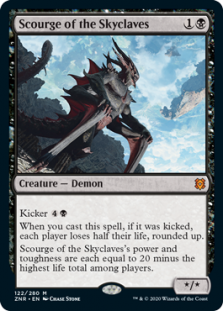 I know, I've already hedged about Scourge Shadow and especially 4C Omnath twice, but this is something else entirely. Since the tier list is an aggregation, it misses some crucial context about how November played out. Approximately 2/3 of all Shadow and Omnath results came in the first two weeks of November, and Omnath virtually disappeared from the week of November 22. In other words, they both jumped out to enormous early leads, but coasted to the finish. Which suggests they're less dominant than they appear.
I know, I've already hedged about Scourge Shadow and especially 4C Omnath twice, but this is something else entirely. Since the tier list is an aggregation, it misses some crucial context about how November played out. Approximately 2/3 of all Shadow and Omnath results came in the first two weeks of November, and Omnath virtually disappeared from the week of November 22. In other words, they both jumped out to enormous early leads, but coasted to the finish. Which suggests they're less dominant than they appear.
I can say with some certainty why this happened. The overall metagame is certainly shifting, and players are getting used to  playing against the popular decks, which will cut into win percentage and results. This is has been particularly true for Omanth decks, with Boil coming seemingly from nowhere to take 15th on MTGGoldfish's staples list. Having a big target on one's back means just that.
playing against the popular decks, which will cut into win percentage and results. This is has been particularly true for Omanth decks, with Boil coming seemingly from nowhere to take 15th on MTGGoldfish's staples list. Having a big target on one's back means just that.
However, I suspect at least some of that drop off (and rise in the first place) is artificial. Streamers have to keep up with trends and constantly switch decks to maintain interest (and thus their viewership and income). It's logical that there was a mass exodus of influencers from Shadow and Omnath after a few months of interest now that the decks are old hat. Such an event would have shifted results away from both decks and could have dropped the non-influencer user base if players followed suit and stopped playing the decks, regardless of their actual results. I can't prove this happened, but it makes logical sense.
What Happened to Humans?
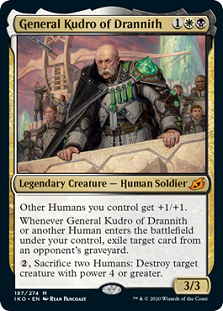 On that note, where'd all the Humans go? There were 45 results for Humans in October, making it the third-place deck. I think I recorded 3 in November. I can't remember ever seeing so stark a drop-off before, and I have no idea why. It's worse than Ponza's October collapse. There's never been a metagame shift outside of an Eldrazi Winter situation to warrant such cratering. Mono-red Prowess made a comeback, as did ramp, and while they're not great matchups, the overall metagame is not that different from October. Even if it had gotten that hostile, I'd expect a more gradual fall. I mean, Infect didn't just disappear after Gitaxian Probe was banned, and straight Jund is still hanging around. Did the community just agree to stop playing Humans and I missed the memo?
On that note, where'd all the Humans go? There were 45 results for Humans in October, making it the third-place deck. I think I recorded 3 in November. I can't remember ever seeing so stark a drop-off before, and I have no idea why. It's worse than Ponza's October collapse. There's never been a metagame shift outside of an Eldrazi Winter situation to warrant such cratering. Mono-red Prowess made a comeback, as did ramp, and while they're not great matchups, the overall metagame is not that different from October. Even if it had gotten that hostile, I'd expect a more gradual fall. I mean, Infect didn't just disappear after Gitaxian Probe was banned, and straight Jund is still hanging around. Did the community just agree to stop playing Humans and I missed the memo?
Blood Moon Resurgent
As noted above, the metagame became more hostile towards many colored decks as November wore on. However, Boil was more of an exclamation mark than the reason, as granddaddy Blood Moon came back in a big way. Part of this is the minor resurgence of Ponza, but the primary change was Mono-Red Prowess started maindecking a full set of Moons.
Mono-Red Prowess, Tweedel (1st Place, Modern Challenge 11/29)
Having argued repeatedly that Blood Moon was highly effective against the top decks and was underplayed, I'm glad that the lesson finally stuck. The question remains whether it is effective enough to stick.
Power Rankings
 Tracking the metagame in terms of population is standard practice. However, how do results actually factor in? Better decks should also have better results. In an effort to measure this, I’ve started using a power ranking system in addition to the prevalence list.
Tracking the metagame in terms of population is standard practice. However, how do results actually factor in? Better decks should also have better results. In an effort to measure this, I’ve started using a power ranking system in addition to the prevalence list.
A reminder of how it works: as I go through the Preliminary and Challenge results, I mark each deck’s record or placement respectively. Points are then awarded based on those results. Preliminaries report results based on record, so that’s how the points are distributed. 5-0 is three points, 4-1 is two, and 3-2 is one. Challenges are reported in terms of placing, so being Top 8 is worth three points, Top 16 is two, and being reported at all is one. The system is thus weighted to award more points to decks that perform well in Challenges rather than Preliminaries. The reason is simply that Challenges are larger and more competitive events, and the harder the field, the better a deck needs to be.
The Power Tiers
The 681 decks earned a total of 1110 points in November. Interesting to note, this is the largest gap between population and points so far. The average points were 13.88, so 14 points makes Tier 3. The STdev was 19.69, meaning Tier 2 began at 34 points and Tier 1 is for 54 points or more. There were 22 decks just like the population tiers, but Jund didn't make the cut on points. In its place is Counters Company, which in turn missed the population cutoff.
Notable this month is that the tier composition didn't change, and only one deck fell from Tier 3. Previous months saw lots of decks change tier from population to power, but not in November. It doesn't mean anything, but it's an interesting curiosity. The other thing to note that Tier 1's power percentage is overall higher than its population share despite both being down from October. There's clear evidence that the metagame broadened in November. Moreover, it's pretty clear to me that I'm justified in not calling Omnath or Scourge Tier 0 decks despite their stats potentially justifying such a decision.
A General Reshuffling
Despite tier composition being largely unchanged, tier positions are drastically different, reinforcing that popularity doesn't indicate actual power. Heliod Company jumped Reclaimer Titan, though the difference between the two is a single 5-0 result. More significant is Amulet Titan switching places with Mono-Red Prowess and all the shifts that happen in Tier 3. It's clear that Modern is a very dynamic place right now, and that the real best-performing decks aren't always the most played.
Average Power Rankings
Finally, we come to the average power rankings. These are found by taking total points earned and dividing it by total decks, which measures points per deck. I use this to measure strength vs. popularity. Measuring deck strength is hard. Using the power rankings certainly helps, and serves to show how justified a deck’s popularity is. However, more popular decks will still necessarily earn a lot of points. This is where the averaging comes in. Decks that earn a lot of points because they get a lot of results will do worse than decks that win more events, indicating which deck actually performs better. A higher average indicates lots of high finishes, where low averages result from mediocre performances and high population. Lower-tier decks typically do very well here, likely due to their pilots being enthusiasts. So be careful about reading too much into the results.
The Real Story
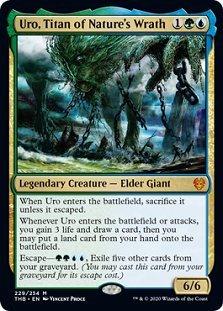 After months of looking, I think this system may be the best that I can do. I just can't find anyone who's tried to do sports-style stats more Magic, nor is there any reason to suspect that they would be appropriate. So, I'll just have to roll with what I have.
After months of looking, I think this system may be the best that I can do. I just can't find anyone who's tried to do sports-style stats more Magic, nor is there any reason to suspect that they would be appropriate. So, I'll just have to roll with what I have.
When considering the average points, the key is looking at how far-off a deck is from the Baseline stat. The closer a deck's performance to the Baseline (which is the overall average of points/population), the more likely it is to be performing close to its "true" potential. A deck that is exactly average would therefore perform exactly as well as expected. The further away the greater the deviation from average, the more a deck under- or over-performs. On the low end, the deck's placing was mainly due to population rather than power, which suggests it's overrated. A high-scoring deck is the opposite.
I'd like to formalize this more, but the usual trick using standard deviations won't work. Given the small numbers involved, the STdev encompasses the whole data range, meaning you just have to eyeball it to see if the deviation is significant.
The only deck to crack the two-point average this month was Hammer Time, the mono-white Sigarda's Aid/Colossus Hammer deck. Granted, Hammer Time had a very low population but managed a number of impressive results. This is the perfect storm for a high rank, but it doesn't necessarily guarantee good placement in the metagame. It doesn't make it a fluke, either; only time can tell that. Hammer Time is similar to Scourge Shadow in that it has a strong aggro-combo plan, but finds itself lacking in the disruption department. Hammer Time makes up for this weakness by being faster, which moves it more into glass-cannon territory. It's going to do very well in the hands of expert enthusiasts, but I'm skeptical of its staying power.
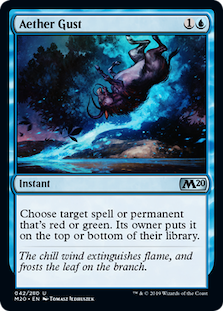 What's Uro's Deal?
What's Uro's Deal?
All the Uro decks that made November's tier list landed below the point average. 4-Color Omnath wasn't too far below, so it's probably within the margin of error. However, its being on the low end certainly suggests that its position as top deck is more due to population than performance. That the other Uro deck, Sultai Uro, is well below the average all but confirms that Uro decks suffered in November. Given the above identified trends, it would strongly suggest that Modern is adapting to Uro, and the Titan is losing a lot of its bite. December will be critical in confirming or refuting this idea.
Evolution Endures
At the end of the day, despite all the grumbling, Modern appears to still be in a very good spot. Therefore, I'm thinking Modern may be moving away from needing bans in the immediate future. Of course, I don't know overall win percentages, so I may be surprised come January. Still, given that the top decks appear to be losing ground and the overall metagame keeps churning away, I think Modern's perfectly healthy.






These results don’t fit with my preconceived perceptions! I demand a recou–I mean, re-evaluation of the data!
Jokes aside, another great breakdown, thanks for handling the legwork for all of us. While I’m not taken with any format that sees Boil (or it’s greener counterpart Choke) as a staple sideboard card. Now, I know how all those poor Affinity felt. Say, what happened to all of them?
Although I’m not personally happy with modern right now, it’s hard to argue with sound statistics and well developed arguments. But I’m a Magic player, as long as there are clouds there’s something to shout at. I guess I’ll just ride this wave and keep my fins low until MH2 when Fish finally becomes relevant again.
Oh, hey Champ, what are you doing out here on the edge of obscurity, so far from your parish?
Thanks again Modern Nexus.
As always, I aim to please.
And don’t give up the fins so soon. Fish does keep showing up in the data. Granted, it’s all Nikachu’s doing. But it does still show up.
Long time lurker, first time poster. Loving the data based approach to modern results rather than the regular magic player’s approach of shrieking for bans any time a blue based control deck places well. I know I’m the minority but I love the fair, grindy interactive magic Uro/sanctuary incentivises. And as a long time modern fan I like that other decks can still poke holes in it, allowing what HOPEFULLY looks the format self correcting. Viva la modern!
Totally agree Ben! These results are showing us that blue is far from unbeatable, even if Uro is a pretty crazy Magic card. Thanks for posting!
As usual these metagame updates are much appreciated ! Thanks for the work you put in.
As regards “what happened to Humans”, I have been playing the deck since its Inception. I dont really have an explanation for these drops and spikes of our metagame share.
I know for sure that I very often disagree with the metagame perception of the deck some players have.
Right now for instance I dont think the deck has much problems and its in my opinion very well positionned if you have a decent sideboard (including multiple copies of Magus of the Moon), but some players come back to the deck after months, jam a list with outdated cards (Gaddock Teeg, Damping Sphere) and then drop the deck again.
I think the initial popularity of the deck makes it so many players have the deck as a backup plan, but not necessarily the metagame knowledge to make it work, so they pick it up again, see they still cant perform with it, and drop it again. The “core” of very dedicated players isnt that big.
Thats my two cents.
That’s a great point Victor, and one I think often slides under the radar in metagame discussions. More than in other formats I’ve played, many Modern players love to hop around to whatever deck is hot or well-positioned at the moment, which keeps things fresh and churning. But the ones who stick with one deck for a year-plus are often the ones who perform best with those piles when the time is right.